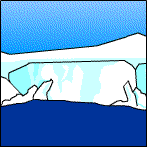Antarctica
Created | Updated Jul 12, 2017

Antarctica is a continent but not a country. No passport is required when you land on its shores. Protocol is set by 29 member-nations of the Antarctic Treaty. In order to have a say in this, a nation must maintain a full-time base; therefore there are many small bases in the Antarctic, but no cities and no arable land. Some nations claim a pie shaped section of the continent, but these claims are deferred to the treaty which sets everything south of the 60th parallel as international territory.
The World Fact Book of Geography says that the continent is 14 million square kilometres in size with less than 5,000 people stationed there. Compare that to China which has a size of 9.4 million square kilometres and a population of one billion people.
The coastline of Antarctica is 17,968 miles long. Here a mere 282,000 square miles is bare in the summer. Along this coastline, several species of penguins have colonies where they fish, raise young, and study tourists. Along the coastline most icebergs are also born.
Inland, the continent of Antarctica is a huge dome of frozen water. It resembles the polar cap of Mars except that the atmosphere has a high concentration of nitrogen and oxygen.
Temperatures at the largest base, McMurdo Station, range from 30°F (-1°C) to -30°F (-34°C).
Inhabitants
If you see people dressed in red, yellow or blue these are not natives but either tourists or researchers.
For more information on tourists, check out the International Association of Antarctic Tour Operators (IAATO).
For more on researchers, see the websites for the British Antarctic Survey (BAS) or the National Science Foundation (NSF).
Hazards
Hazards in Antarctica include whiteouts, when you can't see where you are going. Many have become disoriented when all landmarks vanished.
Katabatic winds are another hazard. These gravity-fed winds are strongest when descending in altitude rapidly or squeezing between mountains. The wind at this time can become so strong that it actually sculpts glaciers and anything or anyone foolish enough to be on top of them.
One thing researchers watch closely is the ozone hole. A layer of ozone in the ionosphere protects the surface from ultra violet (UV) radiation. This layer is damaged by chemical reactions thinning it to form an ozone hole.
And of course the greatest danger is the cold. At 90° South, there is 24 hours of darkness every day during the winter. This allows the temperature to reach as low as -101°F (-75°C). During the most dangerous days researchers stay indoors, and communicate by shortwave radio or the Internet.

